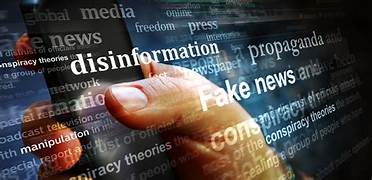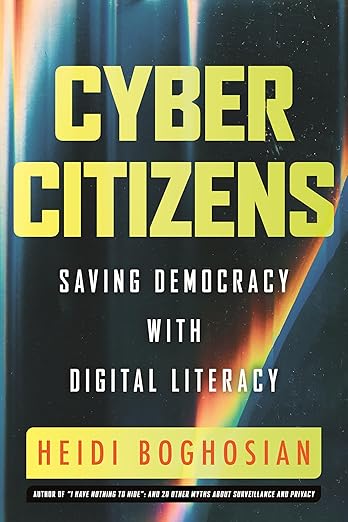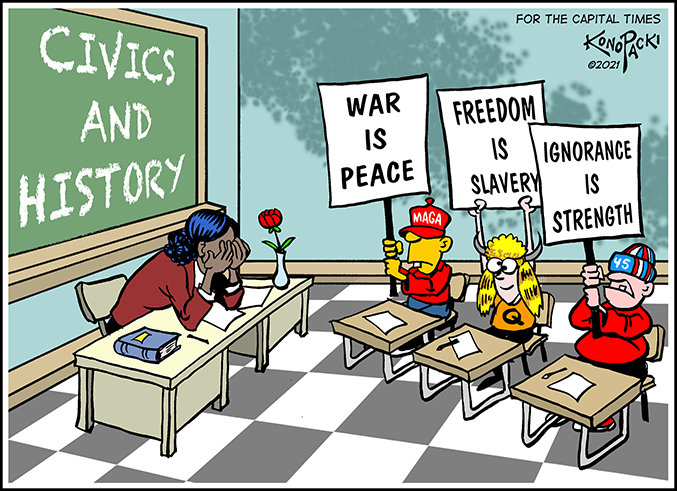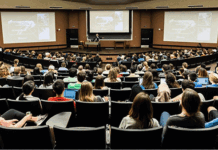
Heidi Boghosian delivers a powerful and meticulously researched call to arms for a digitally overwhelmed society grappling with declining civic engagement and the manipulation of truth in the digital age in her new book Cyber Citizens: Saving Democracy with Digital Literacy.
With sharp insight and urgency, Boghosian—the director of the AJ Muste Foundation for Peace and Justice—maps the intersection of technology, education, surveillance and democracy, urging readers to reclaim agency through critical thinking, media literacy, and civic responsibility. It is not too late, but we are getting to that point quickly.
Structured in three parts—“Back to Basics,” “Democracy in Tilt,” and “Practices for the People”—Boghosian takes readers through a wide-ranging tour of modern threats to democratic values. At the book’s heart is a compelling argument: Digital literacy and civics education are not merely academic skills but essential tools for nurturing democratic participation in an era increasingly defined by misinformation and surveillance capitalism, two immediate threats to our way of life.


The early chapters paint a bleak picture of American civic decline. In “Flunking Civics 101,” Boghosian highlights a systemic erosion of civics education, citing alarming statistics: Only 22% of U.S. students are proficient in civics, and many adults cannot name the three branches of government. She connects this educational shortfall to broader societal vulnerabilities, including susceptibility to propaganda, political apathy, and the rise of authoritarian sentiment among young people. Boghosian makes a convincing case that, without a foundational understanding of how democracy works, citizens cannot defend it—let alone participate meaningfully in it. Indeed, will Americans even be willing to try to defend it?

Boghosian continues in “Failing Digital Literacy” by showing how the absence of digital competence compounds the problem. From government propaganda websites to deepfake pornography and AI “hallucinations,” the modern internet is riddled with manipulative content that demands a new level of media fluency. She warns of “truth decay”—a RAND Corporation term for the increasing inability to distinguish fact from fiction—and underscores the psychological techniques that conspiracists and propagandists use to sway public opinion.
What sets Cyber Citizens apart is its commitment to intersectional analysis. Boghosian shows how misinformation harms not only democratic institutions but also individuals—especially those from marginalized communities. She details the emotional and reputational toll that misinformation campaigns have on mass shooting survivors and victims’ families, as well as how misleading narratives further racial and gendered oppression. At every step, she underscores how unequal access to quality education and digital tools deepens civic inequality.

Equally compelling are the solutions that Boghosian offers. In the book’s final section, she outlines practical tools for fighting back. These include familiar concepts, like digital hygiene and open-source technology, but also innovative practices, such as gamifying civic engagement. Her proposals are not pie-in-the-sky dreams; they are grounded in real examples, like Finland’s highly successful national media literacy programs and student-led civics lawsuits in Rhode Island. Particularly notable is her discussion of organizations and individuals disrupting Big Tech dominance through blockchain innovations, privacy advocacy, and grassroots activism.
Boghosian’s prose is lucid and urgent, balancing academic rigor with accessibility. Her voice blends journalistic integrity with legal acumen—unsurprising given her background as a civil liberties attorney and long-time radio co-host. She neither scolds nor condescends but empowers readers to take action, regardless of their technical background. The book’s inclusion of a “User’s Guide for the Digital Age” and a directory of supporting organizations ensures it is not just a critique, but a practical handbook for action.
Some readers might find Cyber Citizens’ tone to be grim; the steady stream of statistics and case studies on civic failure and digital manipulation might feel overwhelming. However, this tone mirrors the urgency of the crisis, and Boghosian does an admirable job of ending on an optimistic, solution-oriented note, something that is frequently missing in works of this genre.

Ultimately, Cyber Citizens is a timely and essential work. In an era where algorithmic biases, surveillance capitalism, and deep ideological divisions threaten democratic life, Boghosian’s call for a return to foundational civic knowledge—updated for a digital world—is both sobering and inspiring. This is not just a book for educators, activists or technologists; it is for anyone who uses the internet and cares about the future of democratic society.
Boghosian makes a simple yet radical claim: By becoming digitally literate and civically aware, everyday individuals can resist the forces eroding democracy. Her book serves as both a mirror and a guide—reflecting where we have gone wrong and offering a roadmap to something better.
Still, Cyber Citizens makes clear that individual action alone is not sufficient. While it equips readers with tools for personal transformation, it also implicitly calls for something more: strong, coordinated social movements capable of turning awareness into collective power.
The book highlights examples of grassroots organizing and student activism, but the broader need for mass mobilization—through protests, coalitions, and campaigns—is a thread that could be drawn out further. In a digital world where disinformation spreads algorithmically and tech giants shape public discourse, only organized public pressure can challenge entrenched power structures.

Likewise, systemic change cannot happen without activist allies in government—particularly within Congress. While Boghosian’s legal background provides a rich policy context, the book might have more directly addressed the critical role of lawmakers in shaping digital rights, privacy laws, and equitable tech access. In an era where disinformation is weaponized along partisan lines and tech policy lags behind technological development, the need for bold, justice-oriented leadership in public office is more urgent than ever.
This brings us to a central but often implicit theme in Cyber Citizens: the crisis we face is as much a failure of leadership as it is of literacy. Boghosian highlights examples of ethical leadership across various sectors—teachers, technologists, local officials—but she ultimately argues for a broader reimagining of leadership itself. The future of democracy will depend not on elites or experts, but on everyday people choosing to lead with integrity, courage, and accountability. This democratized model of leadership—rooted in community, transparency, and shared responsibility—is essential for navigating the challenges of a fractured digital age.
Perhaps most profoundly, the book raises a fundamental question: What kind of democracy are we trying to save? Boghosian doesn’t romanticize the past or seek to preserve a static ideal. Instead, she envisions a democracy that is inclusive, participatory, and evolving—one that reckons with past exclusions and actively works to expand access, equity, and accountability. It is a vision of democracy not as a fixed system of government, but as an ongoing practice of collective care, informed debate, and moral clarity. In this way, Cyber Citizens aligns with a growing movement that understands democracy as something we must build and rebuild—especially in the face of digital disruption.
For readers asking, What can I do? Boghosian provides tangible answers. She encourages individuals to start where they are: assess your media diet, attend a local school board meeting, support organizations advocating for digital rights, or demand more transparency from elected officials. You don’t need to be a tech expert or policy wonk to make a difference. Civic engagement begins with small, intentional acts that accumulate over time. Through real-life examples of individuals and communities pushing back—from youth lawsuits to neighborhood surveillance bans—Boghosian illustrates how democratic renewal starts at the ground level, wherever people choose to get involved.

CovertAction Magazine is made possible by subscriptions, orders and donations from readers like you.
Blow the Whistle on U.S. Imperialism
Click the whistle and donate
When you donate to CovertAction Magazine, you are supporting investigative journalism. Your contributions go directly to supporting the development, production, editing, and dissemination of the Magazine.
CovertAction Magazine does not receive corporate or government sponsorship. Yet, we hold a steadfast commitment to providing compensation for writers, editorial and technical support. Your support helps facilitate this compensation as well as increase the caliber of this work.
Please make a donation by clicking on the donate logo above and enter the amount and your credit or debit card information.
CovertAction Institute, Inc. (CAI) is a 501(c)(3) non-profit organization and your gift is tax-deductible for federal income purposes. CAI’s tax-exempt ID number is 87-2461683.
We sincerely thank you for your support.
Disclaimer: The contents of this article are the sole responsibility of the author(s). CovertAction Institute, Inc. (CAI), including its Board of Directors (BD), Editorial Board (EB), Advisory Board (AB), staff, volunteers and its projects (including CovertAction Magazine) are not responsible for any inaccurate or incorrect statement in this article. This article also does not necessarily represent the views the BD, the EB, the AB, staff, volunteers, or any members of its projects.
Differing viewpoints: CAM publishes articles with differing viewpoints in an effort to nurture vibrant debate and thoughtful critical analysis. Feel free to comment on the articles in the comment section and/or send your letters to the Editors, which we will publish in the Letters column.
Copyrighted Material: This web site may contain copyrighted material the use of which has not always been specifically authorized by the copyright owner. As a not-for-profit charitable organization incorporated in the State of New York, we are making such material available in an effort to advance the understanding of humanity’s problems and hopefully to help find solutions for those problems. We believe this constitutes a ‘fair use’ of any such copyrighted material as provided for in section 107 of the US Copyright Law. You can read more about ‘fair use’ and US Copyright Law at the Legal Information Institute of Cornell Law School.
Republishing: CovertAction Magazine (CAM) grants permission to cross-post CAM articles on not-for-profit community internet sites as long as the source is acknowledged together with a hyperlink to the original CovertAction Magazine article. Also, kindly let us know at info@CovertActionMagazine.com. For publication of CAM articles in print or other forms including commercial internet sites, contact: info@CovertActionMagazine.com.
By using this site, you agree to these terms above.
About the Author

John Kiriakou was a CIA analyst and case officer from 1990 to 2004.
In December 2007, John was the first U.S. government official to confirm that waterboarding was used to interrogate al-Qaeda prisoners, a practice he described as torture.
Kiriakou was a former senior investigator for the Senate Foreign Relations Committee and a former counter-terrorism consultant. While employed with the CIA, he was involved in critical counter-terrorism missions following the terrorist attacks of September 11, 2001, but refused to be trained in so-called “enhanced interrogation techniques,” nor did he ever authorize or engage in such crimes.
After leaving the CIA, Kiriakou appeared on ABC News in an interview with Brian Ross, during which he became the first former CIA officer to confirm the existence of the CIA’s torture program. Kiriakou’s interview revealed that this practice was not just the result of a few rogue agents, but was official U.S. policy approved at the highest levels of the government.
Kiriakou is the sole CIA agent to go to jail in connection with the U.S. torture program, despite the fact that he never tortured anyone. Rather, he blew the whistle on this horrific wrongdoing.
John can be reached at: jkiriakou@mac.com.










